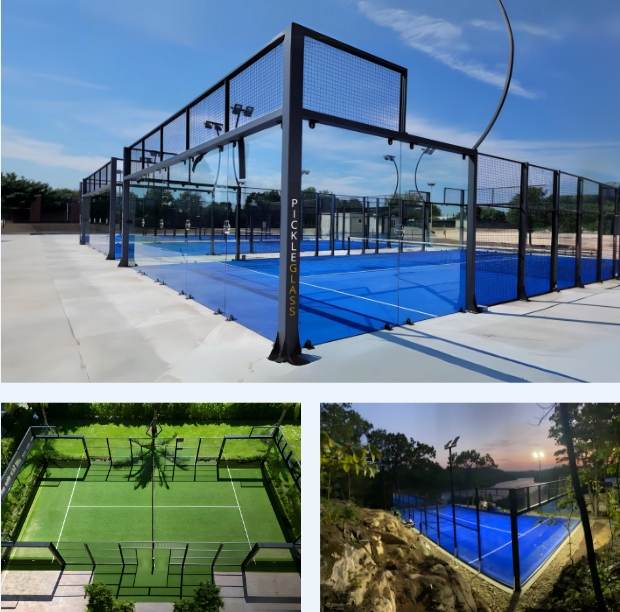In recent years, pickleball has surged in popularity, attracting players of all ages to its fast-paced and engaging gameplay. However, as more pickleball courts are established, concerns about noise pollution in residential areas have arisen. The distinctive sound of pickleball can be a point of contention for neighbors, leading to tensions and disputes. Working with sound engineering and architecture experts can provide valuable insights into effective noise reduction strategies for pickleball courts.
PICKLETILE can conduct thorough site assessments and recommend specialized solutions tailored to the community’s specific needs. Experts can offer ongoing support and guidance, helping communities adapt and refine their noise reduction measures. By leveraging their expertise, communities can implement measures that effectively minimize noise pollution while allowing enthusiasts to enjoy their sport.
In this blog, we will look into the issue of pickleball court sound and explore potential solutions to address concerns while still allowing enthusiasts to enjoy their favorite sport:
Understanding the Concerns
Pickleball is known for its unique sound, often described as a combination of a ping and a pop. While this sound adds charm to the game, it can become disruptive in residential neighborhoods, particularly when courts are close to homes. The repetitive nature of the sound, especially during peak playing hours, can be bothersome to residents seeking peace.
Impact on Quality of Life
Excessive noise from pickleball courts can have a detrimental impact on the quality of life for residents. It can disrupt sleep patterns, interfere with outdoor activities, and cause stress and annoyance. Additionally, prolonged exposure to high noise levels can adversely affect health, including hearing loss and increased risk of cardiovascular problems.
Exploring Solutions
Addressing concerns about pickleball court noise requires a collaborative approach involving players, community members, and local authorities. Here are some potential solutions to consider:
- Sound Barriers:Installing sound barriers such as fences or walls around pickleball courts can help mitigate noise transmission to surrounding areas. These barriers should be strategically designed to effectively block sound without obstructing airflow or visibility.
- Noise Reduction Equipment:Utilizing noise-reducing equipment such as paddles with quieter materials or sound-dampening court surfaces can help lessen the overall noise generated during gameplay.
- Designated Playing Hours:Implementing designated playing hours for pickleball courts can help minimize disturbance to residents, allowing them to enjoy quieter times during the day.
- Community Outreach and Education:Educating players about the importance of being mindful of noise levels and respecting neighbours can foster community awareness and cooperation.
- Location Selection:When establishing new pickleball courts, careful consideration should be given to their proximity to residential areas. Optimal site selection can help minimize the impact of noise on neighboring homes.
In conclusion, addressing concerns about pickleball court noise requires a multifaceted approach that considers the needs of both players and residents. By implementing a combination of solutions, from sound barriers to community outreach, we can strive to strike a balance that allows for the enjoyment of pickleball while respecting the quiet of residential areas. Partnering with experts empowers communities to address pickleball court noise comprehensively and sustainably, fostering a harmonious balance between recreational activities and residential well-being.

